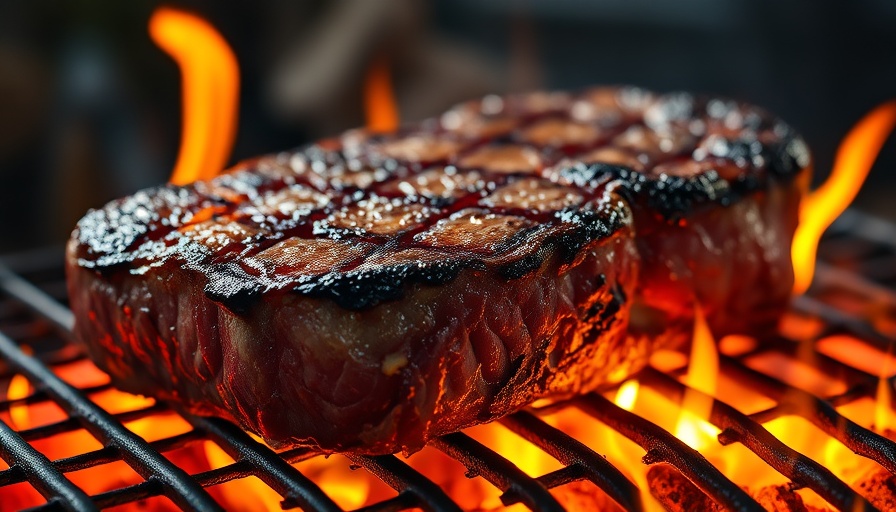
Direct Grilling vs Reverse Searing: A Battle of Techniques
When it comes to preparing the perfect steak, two techniques often come into play: direct grilling and reverse searing. Each method has its unique charm and application, particularly when dealing with thick cuts like tri-tip. Understanding both can elevate your outdoor cooking game and bring a delightful taste to your table.
Why Choose Direct Grilling?
Direct grilling involves cooking meat directly over the heat source. For tri-tip, this method is rooted in tradition, especially from its birthplace in Santa Maria, California. Here, cooks use a grill designed with a raisable grate, allowing for a perfect char while maintaining temperature control. Seasoning typically includes salt, pepper, and sometimes garlic or oregano. The aim is to achieve a well-cooked, juicy steak without burning the exterior.
While direct grilling imparts excellent flavor and a satisfying crispy exterior, it requires your full attention for about 20 to 30 minutes. The key is to manage the heat carefully, preventing the meat from becoming tough or overdone. Serve your steak immediately for optimal taste!
The Magic of Reverse Searing
Reverse searing, on the other hand, offers a modern twist that many home cooks appreciate for its ease and reliability. This method starts by indirect grilling your tri-tip at a lower temperature, allowing it to gradually cook through until it reaches around 100 degrees internally. The benefit? This process effectively eliminates the frustrating “bullseye” effect—where the middle of your steak remains raw while the outer edge cooks too quickly.
After the initial cooking phase, you can let your steak rest as long as you desire, freeing you from the time constraints that direct grilling imposes. When ready to serve, increase the grill's temperature for a quick sear, achieving that coveted juicy interior and nicely browned exterior. Plus, if you're utilizing hardwood chips in your charcoal grill, you can add a delightful smokiness that enhances the steak's overall flavor profile.
Why Not Just Stick to Reverse Searing?
This question often arises among grilling enthusiasts. While reverse searing is efficient, many passionate cooks find joy in the traditional drama of direct grilling. The process evokes a sense of connection—with the fire, the smoke, and the meat itself. To some, it’s more than just cooking; it’s an art form that delivers a unique taste from hands-on grilling.
Ultimately, both techniques deserve a place in your cooking arsenal. Direct grilling provides rich flavors and experiences, while reverse searing offers convenience and precision. Why not experiment with both? Discovering which method resonates more with you could lead to delightful culinary adventures.
Conclusion: Choose Your Path
As you embark on your grilling journey, remember that every technique has its merits. Whether you prefer the classic method of direct grilling or the modern efficiency of reverse searing, both can yield mouth-watering results that impress family and friends alike. So fire up your grill and enjoy the process of mastering these skills!
 Add Row
Add Row  Add
Add 




 Add Row
Add Row  Add
Add 

Write A Comment